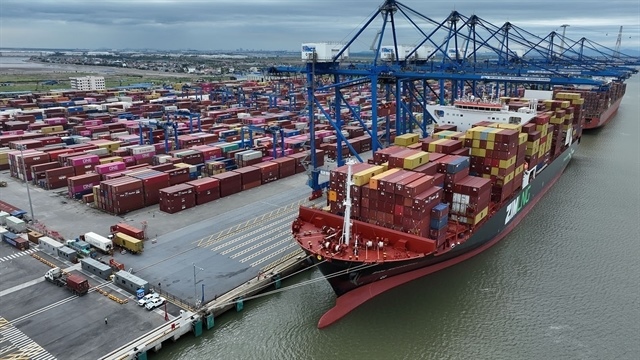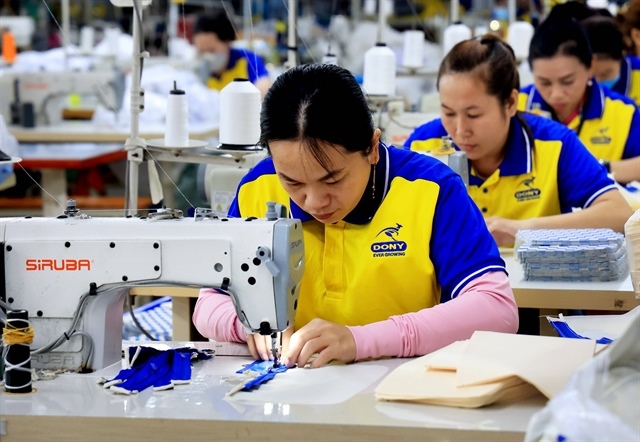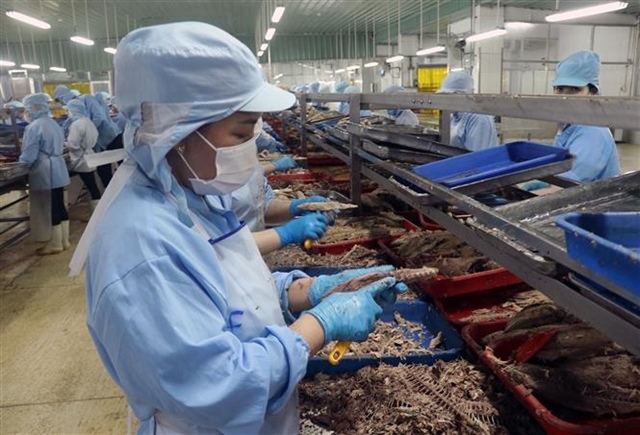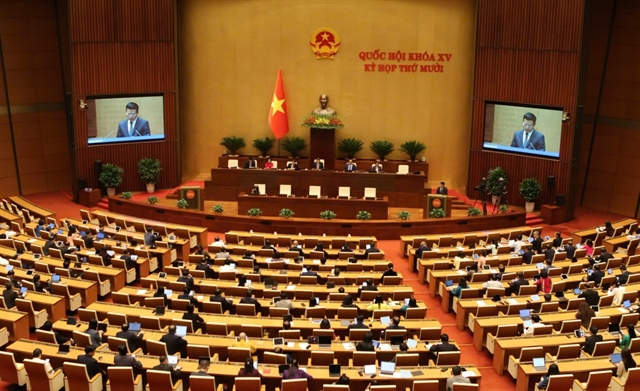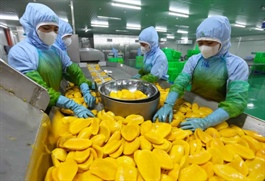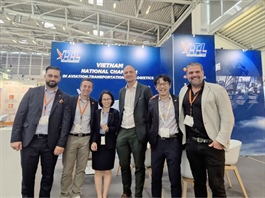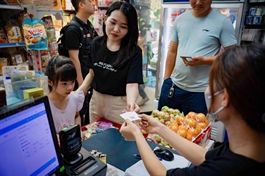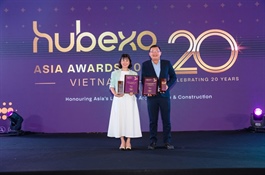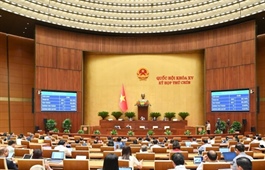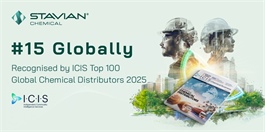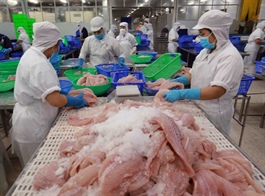Shinec pioneers green, digital, and circular IPs in Vietnam
Shinec pioneers green, digital, and circular IPs in Vietnam
Shinec JSC, the investor of Nam Cau Kien Industrial Park in the northern city of Haiphong, is at the forefront of the green, digital, and circular economy transition in Vietnam’s industrial real estate. Chairman Pham Hong Diep discussed with VIR’s Thanh Van how the company is charting a path following circular economy principles and the plan to replicate a successful model in Vietnam and Russia.
How do Vietnamese businesses adapt to the stricter sustainability regulations in both local and international markets?

Chairman Pham Hong Diep |
Sustainability is no longer an option, but a path must be taken by businesses to survive and integrate deeply into the world. As an industrial real estate developer, Shinec has identified our mission of creating a safe, green, civilised, and responsible production environment.
I always share with my staff that if we want to join the global market, we must be ready to comply with the highest standards of environmental, social, and governance (ESG) criteria. To facilitate the goal, Shinec has pioneered the eco-industrial park (IP) following the circular economy model since 2008, when this concept was still very new in Vietnam.
Today’s achievements stem from our ceaseless efforts in the journey of ongoing learning and adaptation.
Vietnam has launched a national action plan for the circular economy towards 2035. What is the role and contribution of Shinec to turn this into a reality?
The action plan is a major step forward in terms of policy. However, Vietnam needs pioneering models with a proven track record to put the national action plan into practice. We are proud that Nam Cau Kien IP is one of very few models in Vietnam to realise the circular economy.
At Nam Cau Kien, we have formed three circular economy chains in the steel, plastics, and electrical and electronic sectors. Among them, the waste output of a company can be put into an input resource of another company. Additionally, we have built a wastewater treatment plant with a capacity of 2,000cu.m per day and night. About one-quarter of treated wastewater is reused for planting and internal road cleaning, which brings savings of $23,000 per year.
In the past, manufacturers had to pay fees to process steel slag, but now they can sell it at about $190 per tonne to turn expenses into revenue. This is the core principle of a circular economy: there is no such thing as waste – only resources being mis-priced.
|
Could you shed light on the journey to develop the Nam Cau Kien IP following the circular economy model to attract green capital flows?
Since construction began in 2008, we have identified Nam Cau Kien as an eco-IP. At that time, we planted many trees to reduce emissions into the environment. Over time, we have adjusted the planning and development of Nam Cau Kien to meet the eco-IP criteria as regulated in legislation on the management of IPs and economic zones.
Today, Nam Cau Kien IP has achieved tangible results. Notably, one-third of the total land area is reserved for greenery, 8 per cent higher than the regulation. More than one million green trees are planted in the park, creating an ideal living environment for both humans and species.
There are 17 sub-ecosystems with 1,200 species being regenerated. The tree-planting initiative helps the company to slash carbon emissions by 7,000 tonnes per year, and the figure is expected to reach 40,000 tonnes of carbon emissions per year once the rooftop solar system is fully completed. In April 2024, Shinec published its ESG report in collaboration with PwC.
Thanks to these efforts, Nam Cau Kien has been selected as one of 37 IPs globally to join the Global Eco-IP Programme by the United Nations Industrial Development Organization. This is the unique selling point of Nam Cau Kien to attract local and foreign investors, especially those from the EU and South Korea, who highly appreciate the sustainability factors when choosing investment destinations.
|
How does Shinec accelerate digital transformation to support the green transition at Nam Cau Kien?
Green transition and digital transformation are inherently intertwined. Digital transformation is identified as the first pillar to make our environmental endeavours more transparent, measurable, and optimal.
On June 12, the Shinec Digital Green Economy platform was rolled out and put into operation. This comprehensive solution is being researched and developed by TPIsoftware in collaboration with GGI Technology.
As a smart IP management system, the Shinec Digital Green Economy platform focuses on the digital transformation of environmental stewardship, emissions management, and security. Through the platform, the system will collect carbon emission data in real time, analyse emission hotspots and energy usage, and propose strategies to improve and monitor effectively.
The system also supports both website and mobile dashboards, enabling leaders to access reports anytime and anywhere to make timely and efficient decisions. This is the necessary shift to transform Nam Cau Kien into a green, digital, and circular IP.
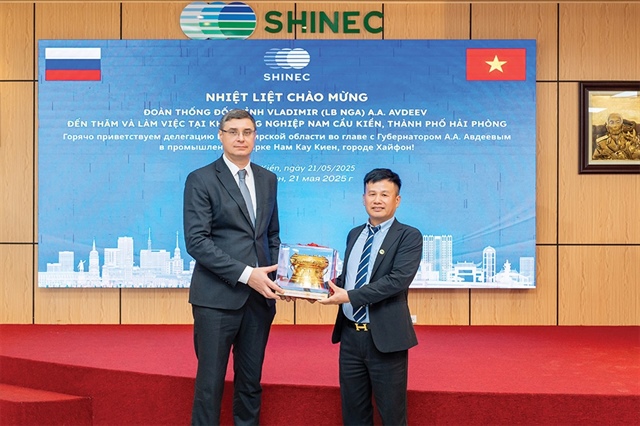
Shinec chairman Pham Hong Diep (right) and a Vladimir province delegation are crafting green and circular initiatives together |
Following the success of Nam Cau Kien, what is Shinec’s plan to scale up the eco-IP model in Vietnam and globally?
Leveraging the Nam Cau Kien lessons, we are deploying eight industrial real estate ventures in Hung Yen, Bac Giang, Quang Ninh, and other localities.
At the same time, we also play a role as a consultant to transfer this model to other developers. This is evidenced by the strategic partnership with Stavian Group and other international companies. Our vision is to build an eco-IP ecosystem, where localities jointly accompany for sustainable development.
In addition, we are advancing an industrial real estate venture in Vladimir, Russia. The project serves as a strong testament to Shinec’s vision to extend our reach to international markets. We signed an MoU on cooperation to invest in Vladimir in early 2025. Our goal is to implement an eco-IP model that blends cultural elements with technology.
If the venture in Russia becomes successful, how do you see the role of Shinec in promoting the economic partnership between the two nations?
Located near Moscow, Vladimir boasts favourable infrastructure and transparent investment attraction policies. The local authority highly appreciates Shinec’s experience in building a green, digital, and circular IP. They hope the undertaking will become a bridge for Vietnamese businesses to boost production and exports to Russia.
I believe the initiative is an important link in the Vietnam and Russia bilateral ties. It not only paves the way for Vietnamese businesses to penetrate the Russian market but also bolsters two-way trade through a green production and logistics model.
Vietnamese businesses will set up their factories there to produce goods for the Asia-Europe market. At the same time, the initiative also illustrates sustainable development standards that Vietnam is pursuing.
Overall, Shinec will play a role as an organiser of the investment ecosystem, contributing to strengthening the strategic cooperation between the two countries.
- 16:00 16/06/2025


